
On January 15, 2022, I had 3 people from Northern Norway visiting, Raymond, Øystein and Arkadiusz. Arkadiusz is originally from Poland, but has lived in Northern Norway for many years. They arrived with Ethiopian Airlines at 07:40. I arrived at the airport 07:50 and they had already cleared immigration, so we loaded up the car and set off for my home. I had given Raymond a long shopping list of items that is not available here in Tanzania, so it was almost Christmas when Raymond opened his bag. Raymond had just bought a new mirrorless Canon Camera and was told that his old memory cards would fit in the same camera. That could possible have been a show stopper for him, but I had extra cards he could borrow from me so the initial crises were avoided. Since I have 3 extra bedrooms, we put them in one room each and we soon met at our balcony to plan the day ahead.
Day 1, Saturday, January 15 – Kiligolf
Raymond and Øystein had been to coastal Kenya on several occassions, but it was the first time for Arkadiusz in Africa. Raymond had sent me a target list with more than 350 species so we had a huge canvas to cover. We met at my terrace at around 09:30 and the boys at once started photographing birds in my garden: Variable and Scarlet-chested Sunbird, Red-billed Firefinch, Vitelline and Chestnut Weaver, Spotted Palm Thrush, Village Indigobird and Northern Grey-headed Sparrow. It was late morning and quite hot, so I decided to take a short circle on the golf course. The birds did not seem to mind the heat because plenty were to be found: Squacco Heron, Grey Heron, Common Sandpiper, Yellow Bishop, European Bee-eater, Hamerkop, Long-tailed Fiscal, Lesser Striped Swallow, Mourning Collared, Laughing, Emerald-spotted Wood, Red-eyed and Ring-necked Doves, Superb Starling, Beautiful Sunbird, Sombre Greenbul, Crested Francolin, Yellow-fronted Canary, Tropical Boubou, Yellow-breasted Apalis, Magpie Shrike, Purple Grenadier, Speckled Mousebird, Grey-headed Silverbill, Bare-eyed Thrush, White-bellied Go-away-bird, Black-faced Waxbill, Pale White-eye, Grey-backed Camaroptera, Bronze Mannikin, Rattling Cisticola, Buff-bellied Warbler, Gabar Goshawk, Tawny-flanked Prinia, Chinspot Batis, Brown-breasted Barbet, Black-backed Puffback, Augur Buzzard, White-browed Scrub-Robin, Willow Warbler, African Fish Eagle, Hadada Ibis, Orange-breasted Bushshrike, Red-cheeked Cordonbleu, Red-faced Cisticola, African Yellow Warbler, Green Sandpiper, Giant Kingfisher, Great Egret, Spotted Flycatcher, Pallid Honeyguide, Brown-throated Martin and Reichenow´s Seed-eater. It was nearly 2 PM when we finally got back to the house and hot as hell. Amazing that the birds were so active during the heat. My maid Neema and my Fiance Selvine prepared a nice lunch for us and we really enjoyed a cold Kilimanjaro Beer. I think the boys were quite impressed that a 4 hour walk in midday heat could produce so many species. I had logged on my Birdlasser more than 60 species. After lunch some of the boys wanted to rest others took pictures of some of the same birds in my garden. At 4PM we decided to finish the circle of my normal morning walk. Here are some of the new species we encountered: Blue-naped Mousebird, Fork-tailed Drongo, Red-chested Cuckoo, African Pied Wagtail, Cardinal and Nubian Woodpecker, Spectacled Weaver, African Grey Hornbill, Common Waxbill, Three-banded Plover, Wood Sandpiper, Grey-Olive Greenbul, Thrush Nightingale, Slate-coloured Boubou, Helmeted Guineafowl, Red-tailed Shrike, Tambourine Dove, Thick-billed Weaver, African Palm Swift and Pied Kingfisher. We were back at the house before 6PM with more than 80 species in the bag on just the lower circle of the golf course. Neema and Selvine prepared us a nice supper and we all went to bed early that night.
Some Pictures from Day 1:

Grey-backed Camaroptera, Camaroptera brevicaudata

Squacco Heron, Ardeola ralloides

Slate-coloured Boubou, Laniarius funebris – Endemic to NE Africa

Giant Kingfisher, Megaceryle maxima

Magpie Shrike, Urolestes melanoleucus

Red-chested Cuckoo, Cuculus solitarius

Nubian Woodpecker, Campethera nubica – Endemic to NE Africa
Day 2, Sunday, January 16 – Kiligolf – Lark Plains – Oldonyo Sambu – Kiligolf
That day we were going to search for the very threatened Beesley´s Lark. I have never dipped on this bird, so I was very confident. We had a very early start and arrived at the Lark Plains at 07:25. As customery we raise the roof of my Green Land Rover, Maggie T as soon as we leave the main road that goes to the Kenyan border. Some of the birds we encountered before we arrived at the Lark spot were: Yellow-bellied Eremomela, Northern Wheatear, Foxy Lark, Taita Fiscal, Isabelline Wheatear, Pied Wheatear, Capped Wheatear, Rosy-patched Bushshrike, Fischer´s Sparrow-Lark, Red-capped lark, Banded Parisoma, Red-fronted Prinia (Warbler), Greater Kestrel, and Chestnut-bellied Sandgrouse. Once we had parked we looked for the two Masai guides. They are the guardians of the Beesley´s Lark, they do not know anything about any other birds, but they sure know how to find the Beesley´s Lark. We just walked straight towards them and they had the Beesley´s Lark near them. Everyone got good pictures and we said good bye to the Masai. Now, there are two other interesting Larks out there on the Lark Plains, namely Athi Short-toed and Short-tailed Lark. Abdul is quite good at finding them, so while I walked slowly back to Maggie T, He took the boys for a little walk. Within 15 minutes they all joined me in the car having found now all 3 larks (+Foxy). We birded a little around the car and added Eastern Chanting Goshawk and Kenya Sparrow to our list. It was now around 09:30 and time for breakfast. We rigged the chairs and used the bonnet as our buffet table. After a quick breakfast, we loaded up in the car and started to drive slowly towards the boma to Saruni, one of the Masai. A dead cow had attracted quite a few Rüppel´s and White-backed Vultures and also two Tawny Eagles in different Morphs. We all managed to get some great shots. On our way to Saruni´s Boma, we picked up the following new species for the day: Pygmy Falcon, White-bellied and Southern Grosbeak Canary, Black-necked-Weaver, Common Rock Thrush, Common Whitethroat, Crowned Lapwing and Temminck´s Courser. We had now reached Saruni´s Boma which is located in a dry Acacia Forest. It was already 11:30, but the place was still teaming with birds. A 1 1/2 hour walk in the heat produced amongst others these species: Grey-capped Social Weaver, Speckle-fronted Weaver, Red-fronted Barbet, Blue-capped Cordon-bleu, Abyssinian Scimitarbill, White-throated Robin (Irania), Brubru, Pygmy Batis, White-headed Mousebird, Von der Decken´s and Northern Red-billed Hornbill, Yellow-spotted Bush Sparrow (Petronia), White-headed Buffalo Weaver and Red-throated Tit. I had parked in the shade of a huge Acacia tree and we enjoyed a nice packed lunch there. After lunch we started driving back towards home, but first stopped at a small quarry. We added White-fronted Bee-eater, Rock Martin, Lanner Falcon and Schalow´s (Abyssinian) Wheatear to our list. The next stop was at the Masai village Oldonyo Sambu. Even though we are more or less birding on a garbage dump, the place holds some amazing birds. We added amongst others: White-necked Raven, White-browed Sparrow-Weaver, Hildebrandt´s Starling, Red-rumped Swallow, Little Rock Thrush, Streaky Seed-eater, Baglafecht Weaver, Fischer´s Lovebird, Marico Sunbird, Speckled Pigeon, Red-and-yellow Barbet, Augur and Common Buzzard, Brown Snake Eagle, Lyne´s Cisticola, Red-winged Starling, Common Kestrel, Long-billed Pipit and Pin-tailed Whydah. By the time we got to the car it was 5:15PM, so we just had to hit it hard in order to come home before dark. We managed to refresh ourself with a shower and when we got back out the dinner was already on the table. After dinner, we retired quickly to bed.
Some pictures from day 2:
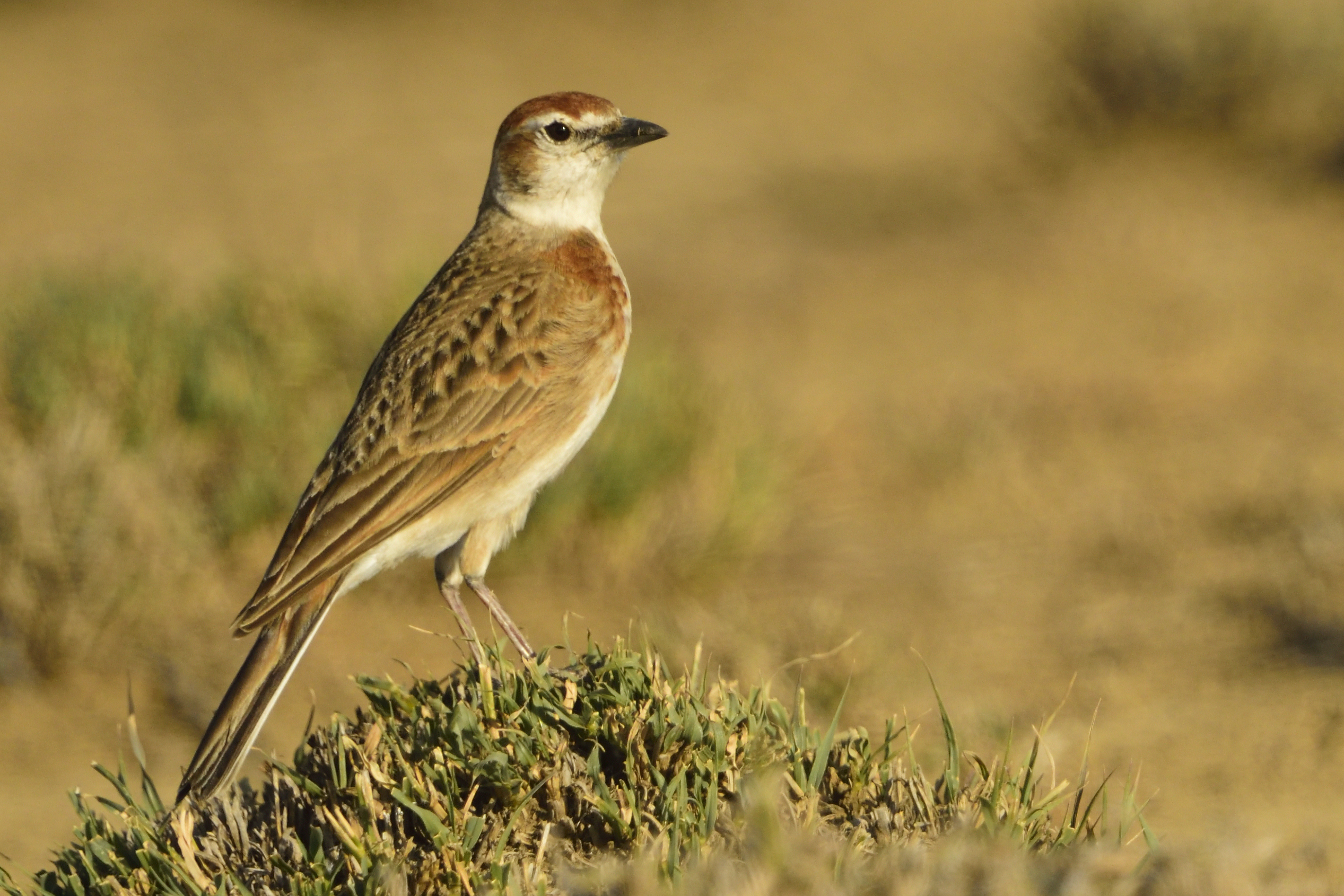
Red-capped Lark, Calandrella cinerea

Tawny Eagle, Aquila rapax

Rüppel´s Vulture, Gyps rueppelli

Southern Grosbeak Canary, Crithagra buchanani – Endemic to Southern Kenya and Northern Tanzania

Fischer´s Sparrow-Lark, Eremopterix leucopareia – Endemic to SE Africa

Grey-capped Social Weaver, Pseudonigrita arnaudi – Endemic to NE Africa
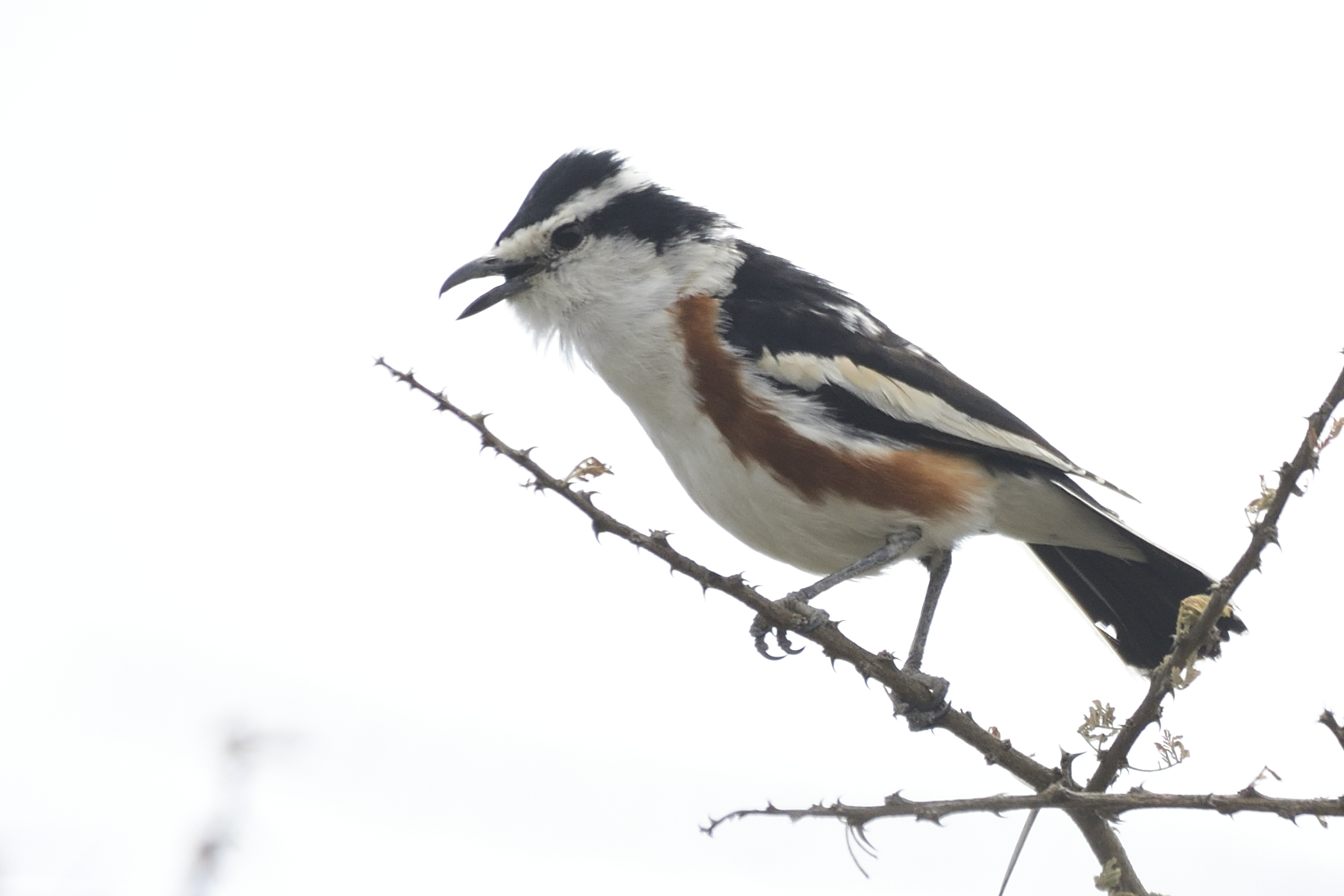
Brubru Nilaus afer

Temminck´s Courser, Cursorius temminckii
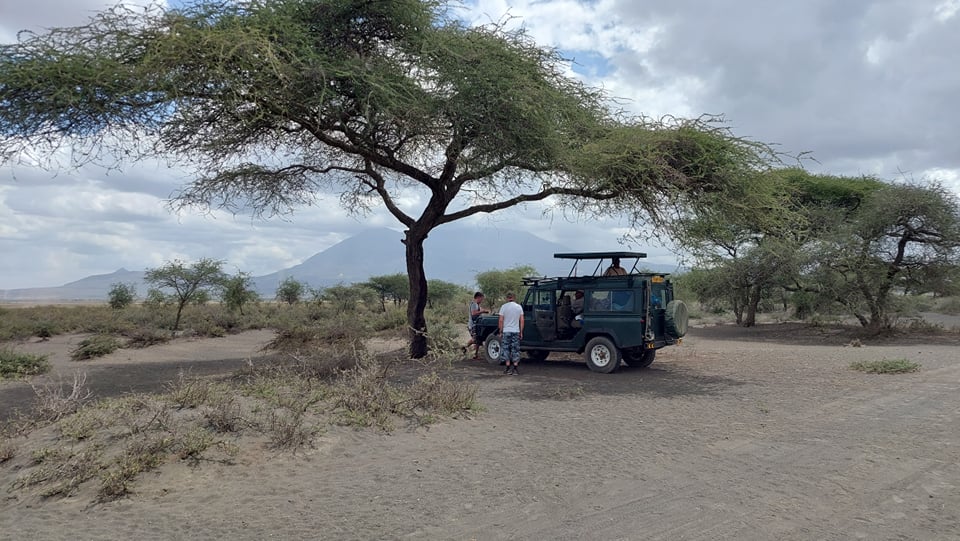
Parked under an Acacia tree near Saruni´s Boma, Lark plains. Picture by Arkadiusz

White-necked Raven, Corvus albicollis

Red-rumped Swallow, Cercropis daurica

Streaky Seed-eater, Crithagra striolata

Little Rock Thrush, Monticola rufocinereus – Endemic to NE Africa

Schalow´s (Abyssinian) Wheatear, Oenanthe schalowi – Endemic to East Africa

Red-fronted Barbet (male), Tricholaema diademata – Endemic to NE Africa

Red-fronted Barbet (female), Tricholaema diademata – Endemic to NE Africa
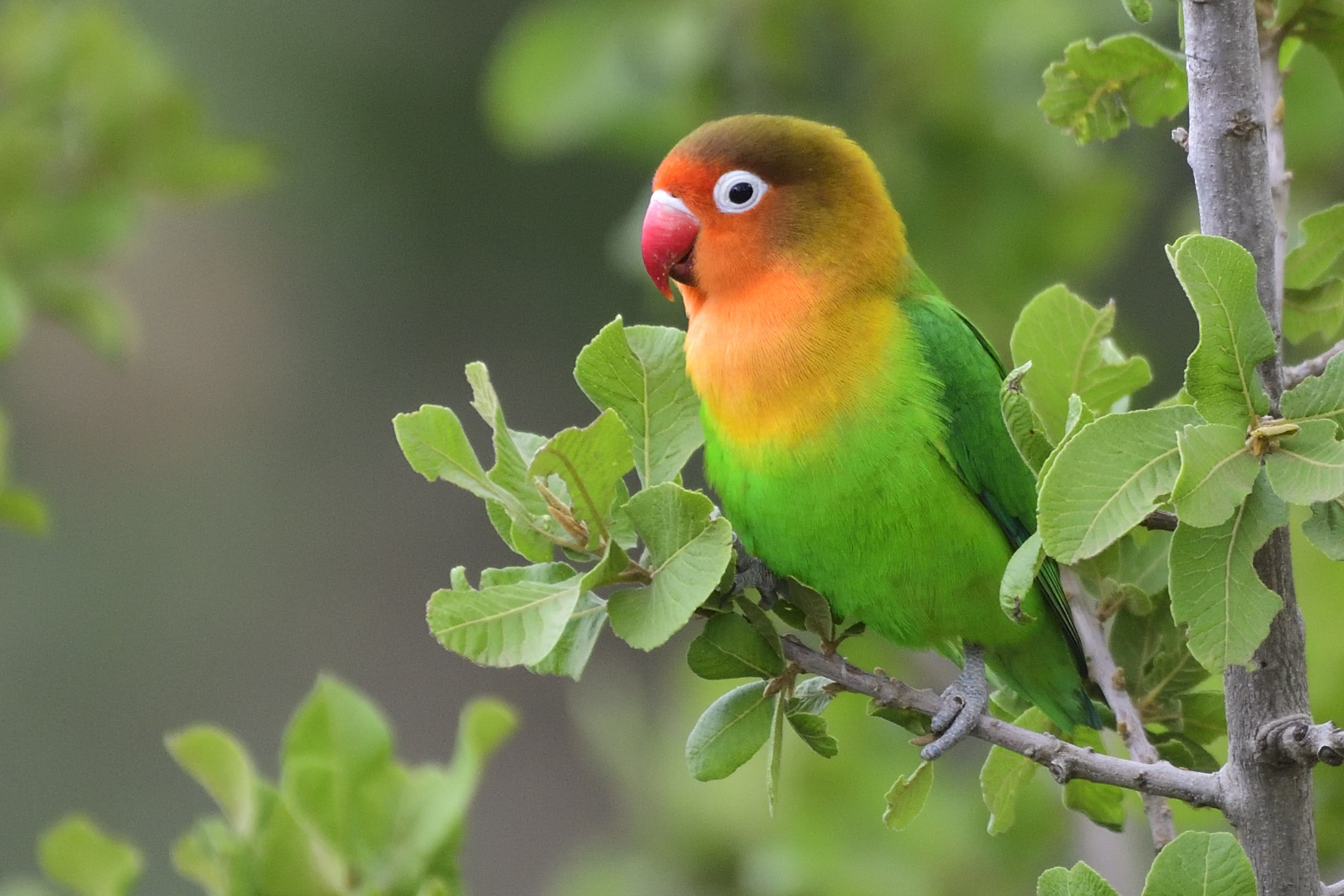
Fischer´s Lovebird, Agapornis fischeri – Endemic to E Africa

Augur Buzzard, Buteo augur

Lyne´s Cisticola, Cisticola distinctus – Endemic to East Africa

Birding Oldonyo Sambu. Picture by Arkadiusz
Day 3, Monday, January 17 – Kiligolf – Tarangire National Park – Kiligolf
Again an early start. We were close to the Tarangire Gate at around 08:00. There is a nesting colony of Rufous-tailed Weavers close to the gate. We stopped there for everyone to get a picture. Abdul took my friends birding while I paid the necessary entrance fee. The park was quite wet, so activity was not the best. I have a normal route that I take and we started recording birds: Silverbird, Northern Red-billed Hornbill, Woodland Kingfisher, Swahili Sparrow, Green-winged Pytilia, Red-billed Buffalo Weaver, Lilac-breasted Roller, Ashy Starling, Yellow-collared Lovebird, Striped Kingfisher, Common Ostrich, Pearl-spotted Owlet, Red-bellied Parrot, Spotted Thick-knee, Northern White-crowned Shrike, Secretarybird, Grey Crowned Crane, Spur-winged Goose, Senegal Lapwing, Wood Sandpiper, Yellow-necked Spurfowl, Blue-cheeked Bee-eater, and Winding Cisticola. We had now reached Public Campsite 1, where we normally have breakfast. We had a quick breakfast and then we were on our way again. Our next stop would be our normal lunch stop at Matete Picnic Site. On the way we registered: African Hawk-Eagle, Yellow and Red-billed Oxpecker, White-browed Coucal, Steppe Eagle, Lappet-faced Vulture, Verreaux´s Eagle-Owl, Grey-headed Kingfisher, Beautiful Sunbird and Water Thick-knee. We came to a very soft spot where I have been stuck before. I watched one Landcruiser pass quite easily, but the next one did not have enough speed and got terrible stuck. He wanted me to drag him out with my Landy. I gave it a try for about half an hour. I knew, I could not get him out, so we left him there. There were plenty of cars to help him, but I could not waste more time on a hopeless mission. The road was blocked so we had to take a detour. We still registered birds: Bare-faced Go-away-bird, Marsh Sandpiper, Bateleur, African Grey Woodpecker, Greater Honeyguide, Brown-crowned Tchagra, D´Arnaud´s Barbet, Marabou Stork, Crested Francolin, Wahlberg´s Eagle, White-bellied Bustard, Knob-billed Duck, Great Spotted Cuckoo, Yellow-throated, Chestnut Bellied and Black-faced Sandgrouse and Little Sparrowhawk. We had now reached the picnic site. It was already 15:00, so we were running late. My plan was to drive Little Serengeti on the way out, but the roads were extremely wet, so after lunch, we opted to take the main road out. On the way out, we only added African Openbill and Coqui Francolin. We left the park around 16:30 with 2 hours to get home before dark. On the way, while my friends were more or less sleeping, I spotted some Abdim´s Storks on a field next to the road. They made for good pictures. Later a flock of Mottled Swift. We arrived safe home Just as dark settled on us. Refresh, dinner and bed.
Some pictures from Day 3:

Ashy Starling, Lamprotornis unicolor – Endemic to Tanzania

Silverbird, Empidornis semipartitus – Endemic to EC Africa

Beautiful Sunbird, Cinnyris pulchellus

Yellow-billed Oxpecker, Buphagus africanus

Woodland Kingfisher, Halcyon senegalensis

Secretarybird, Saggitarius serpentarius

Red-billed Buffalo Weaver, Bubalornis niger

Great Spotted Cuckoo, Clamator glandarius

Black-faced Sandgrouse, Pterocles decoratus – Endemic to NE Africa

Chestnut-bellied Sandgrouse, Pterocles exustus
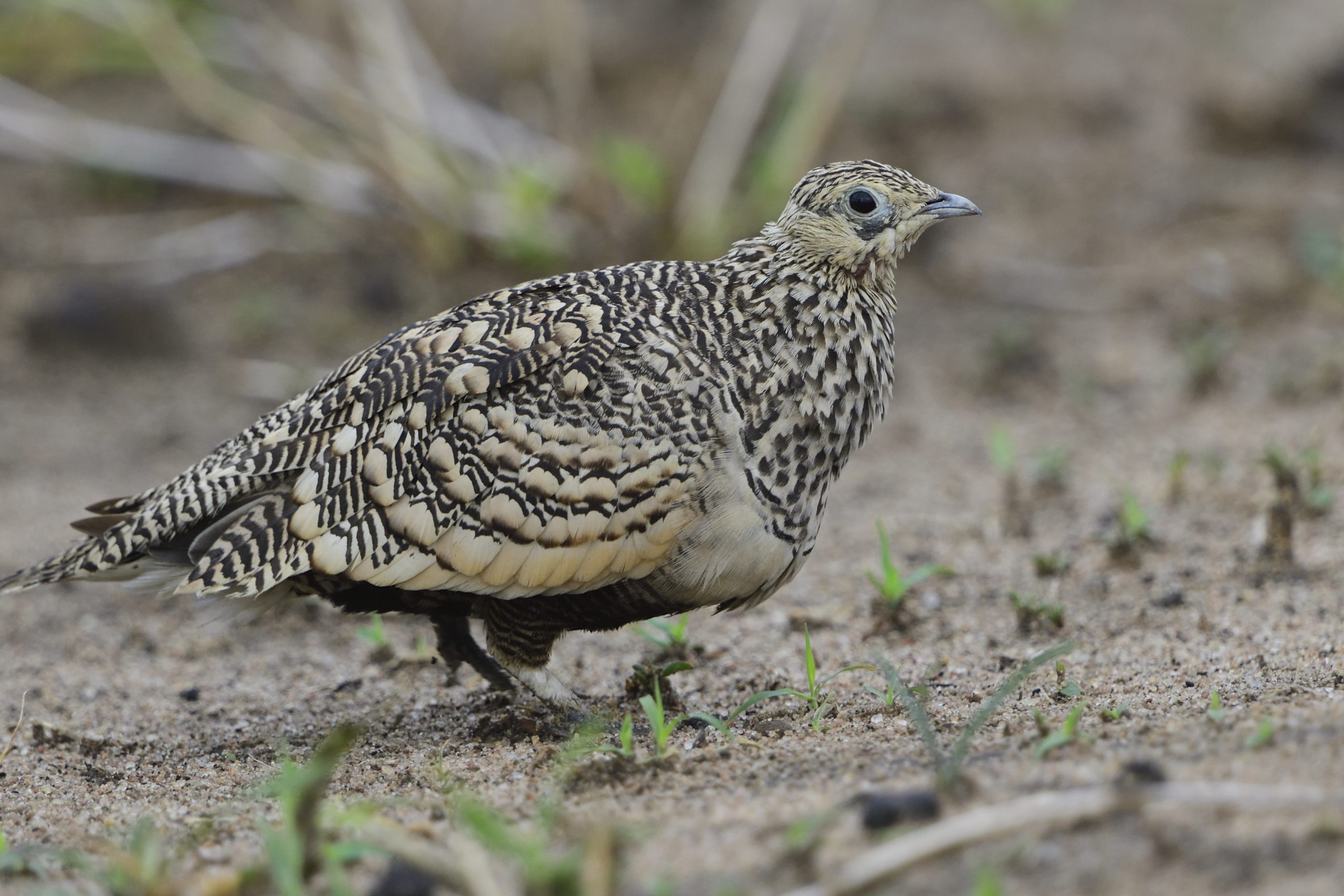
Chestnut-bellied Sandgrouse (female), Pterocles exustus

Yellow-throated Sandgrouse (male), Pterocles gutturalis
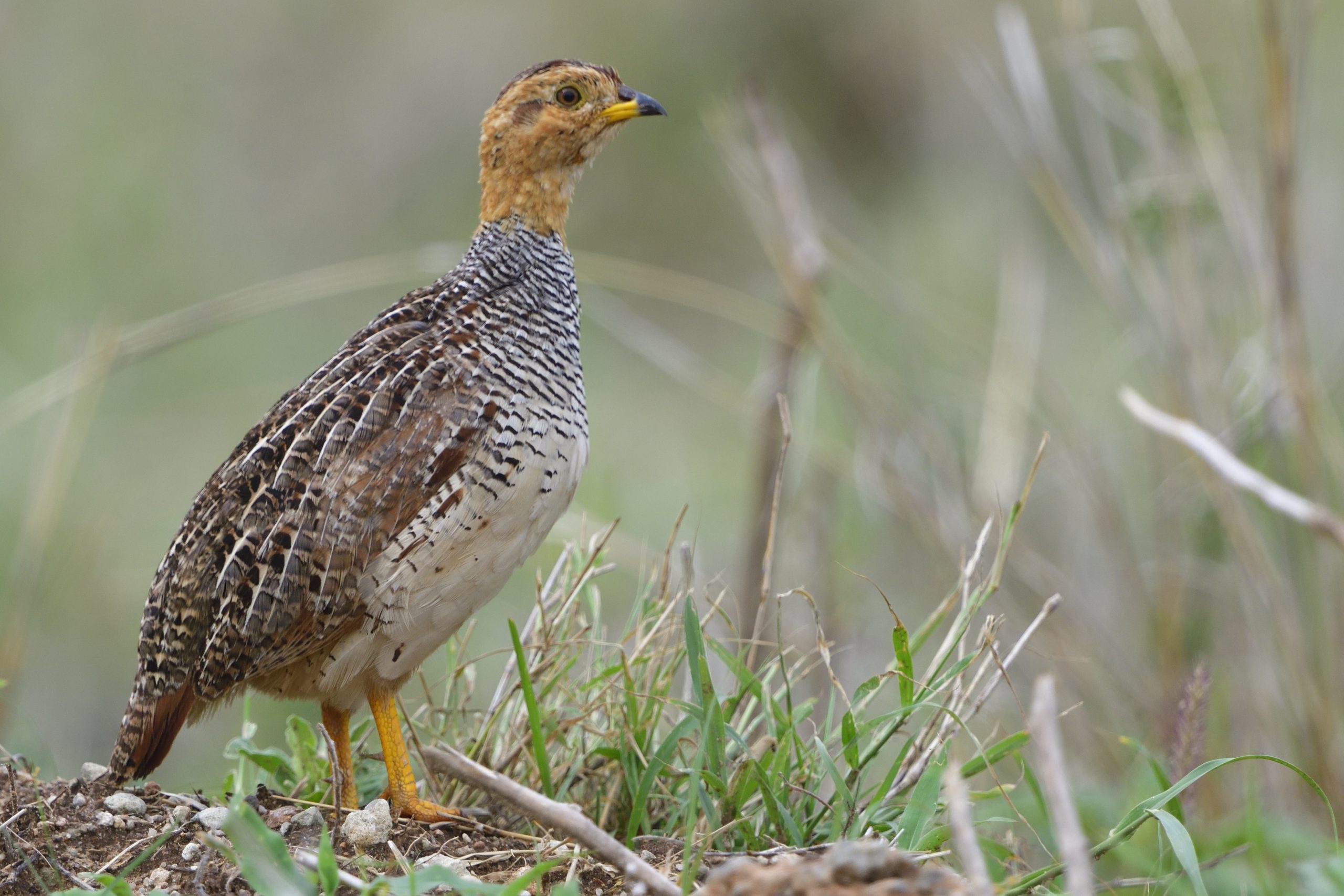
Coqui Francolin, Peliperdix coqui
Day 4, Tuesday, January 18 – Kiligolf – Mererani – the road to Mererani Shambalaya – Kiligolf
Yet another early start. We were at the birding spot just north of Mererani around 07:30. This is a very birdy area that we have added to the tour recently. We stopped were the tar ends, open up the roof of Maggie T and started registering species: Pink-breasted Lark, Black-necked and Lesser Masked Weaver, Grey Wren-Warbler, Grey-headed Bushshrike, White-headed Mousebird, Bare-eyed Thrush, Pygmy Batis, Red.billed Oxpecker, Yellow-spotted Bush-sparrow (Petronia), Eastern Violet-backed Sunbird, Scaly Chatterer, Common Rock Thrush, Red-tailed Shrike, Banded Parisoma, Northern Crombec, Parrot-billed Sparrow, Black-throated Barbet, Pied Wheatear, Lesser Honeyguide, Red-billed Oxpecker, Alpine Swift, Ashy Cisticola and Tsavo Sunbird. We had now reached our normal breakfast spot. We enjoyed our packed breakfast, then Abdul took my friends for a walk in the bush while I took the Landy downhill to meet them there. Some of the birds recorded included: Black-faced Waxbill, Eastern Chanting Goshawk, Purple Grenadier, Somali Bunting, Pringle´s Puffback, White-throated Robin, Mouse-coloured Penduline-Tit, Hunter´s Sunbird and European Nightjar. We drove off again until we reached our turning point where there is a breeding colony of Black-capped Social Weavers. We turned and headed for the Shambalaya Lake. Here are some of the birds we registered at the lake: Western Yellow Wagtail, Intermediate Egret, Whiskered Tern, Great Egret, Yellow-billed Stork, Black-tailed Godwit, White-crested Helmetshrike, Blue-cheeked Bee-eater, Greater Flamingo, White-faced Whistling Duck, Great White Pelican, Red-billed Teal, Gull-billed Tern, Spur-winged Lapwing, Black Heron, Blue-billed (Hottentot) Teal, African Spoonbill, Kittlit´z Plover, Turkestan Shrike, Glossy Ibis, Thre-banded Plover, Ruff, Fulvous Whistling Duck, White-winged Tern, Crimson-rumped Waxbill and Black-crowned Night Heron. It was now past 17:00, so we had to head home. We reached home before dark.
Some pictures from day 4:

Eastern Violet-backed Sunbird, Anthreptes orientalis – Endemic to NE Africa

Scaly Chatterer, Turdoides aylmeri – Endemic to NE Africa

Somali Bunting, Emberiza poliopleura – Endemic to NE Africa

European Nightjar, Caprimulgus europaeus

Black-headed Social Weaver, Pseudonigrita cabinisi – Endemic to NE Africa

Blue-cheeked Bee-eater, Merops persicus

White-crested Helmetshrike, Prionops plumatus

Black-tailed Godwit, Limosa limosa

Red-billed Oxpecker, Buphagus erythrorynchus
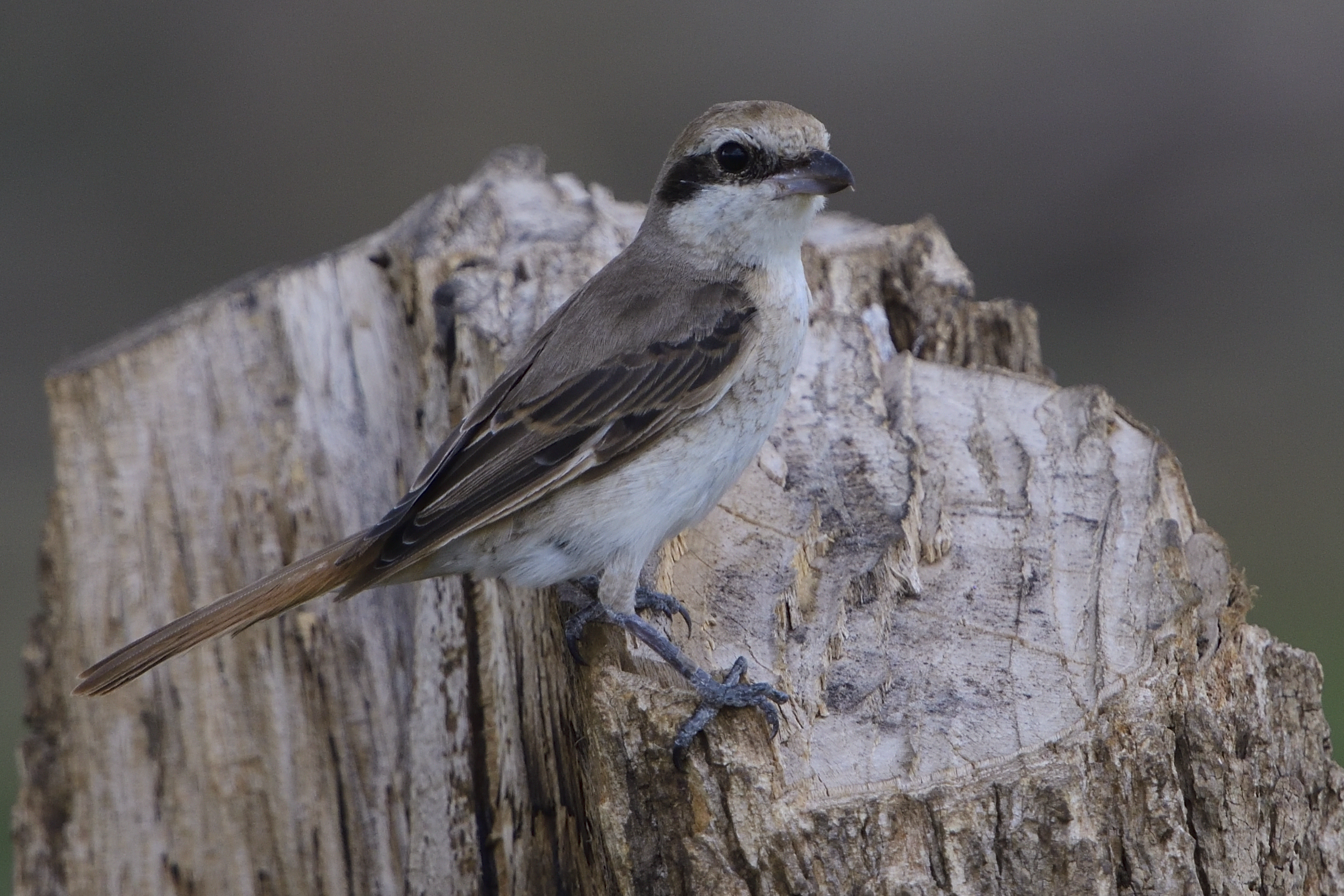
Red-tailed (Turkestan) Shrike, Lanius phoenicuroides

Lilac-breasted Roller, Coracias caudatus

Von der Decken´s Hornbill, Tockus deckeri

Spur-winged lapwing, Vanellus spinosus
Day 5, Wednesday, January 19 – Kiligolf, Nyumba ya Mungu Dam, South Pare Mountains – Elephant Motel Same
Let the safari begin. We did not leave that early this morning. All 3 Norwegians wanted African Skimmer. In order to see the Skimmers on Nyumba ya Mungu Dam, you need very low water. We had not had much rain lately so why not give it a try. We arrived at the dam around 10:20 and started ticking birds. The water level as anticipated was very low allowing us to go to the bank were the Skimmers normally hang out. Some of the birds we registered: Little Grebe, Gull-billed Tern, Reed Cormorant, Water Thick-knee, Abdim´s Stork, Great White Pelican, Black Heron, Curlew Sandpiper, African Skimmer, White-breasted Cormorant, Grey-headed Gull, Caspian Tern, Glossy Ibis, Kittlitz´s Plover, Little Stint and Little Swifts. From Nyumba ya Mungu Dam, we headed to Same and Elephant Motel to check in and have lunch. We had Silvery-cheeked Hornbills in the garden. Around 3 PM, we started our drive up South Pare Mountains. On the way we recorded amongst others Wahlberg´s Eagle, African Grey Hornbill, Hildebrandt´s Starling and Augur Buzzard. We were on top at the birding area around 4PM. It was still a little warm and it took us about an hour to find our main target, the endemic South Pare White-eye. Other birds registered included Cinnamon-chested Bee-eater, Black Saw-wing, Moustached Tinkerbird, African Yellow Warbler, Common Waxbill, Evergreen Forest Warbler, Variable Sunbird, Black-fronted Bushshrike, Olive Woodpecker, Stripe-faced Greenbul, Bar-throated and Black-headed Apalis, Harlaub´s Turaco, Singing Cisticola, African Hill Babbler, Usambara Double-collared Sunbird, Mountain Buzzard, Black Sparrowhawk, White-browed Robin-Chat and Red-throated Twinspot. It was now getting near to 5:20PM and it was time to return to the Motel. We got back to the hotel, freshened up and had dinner. Selvine had taken the Nissan with a friend and gone straight to the Motel. We had a nice dinner and early to bed.
Some picture from day 5:

Kittlitz´s Plover, Charadrius pecuarius

LLittle Stint, Calidris minuta

Grey-headed Gull, Chroicocephalus cirrocephalus
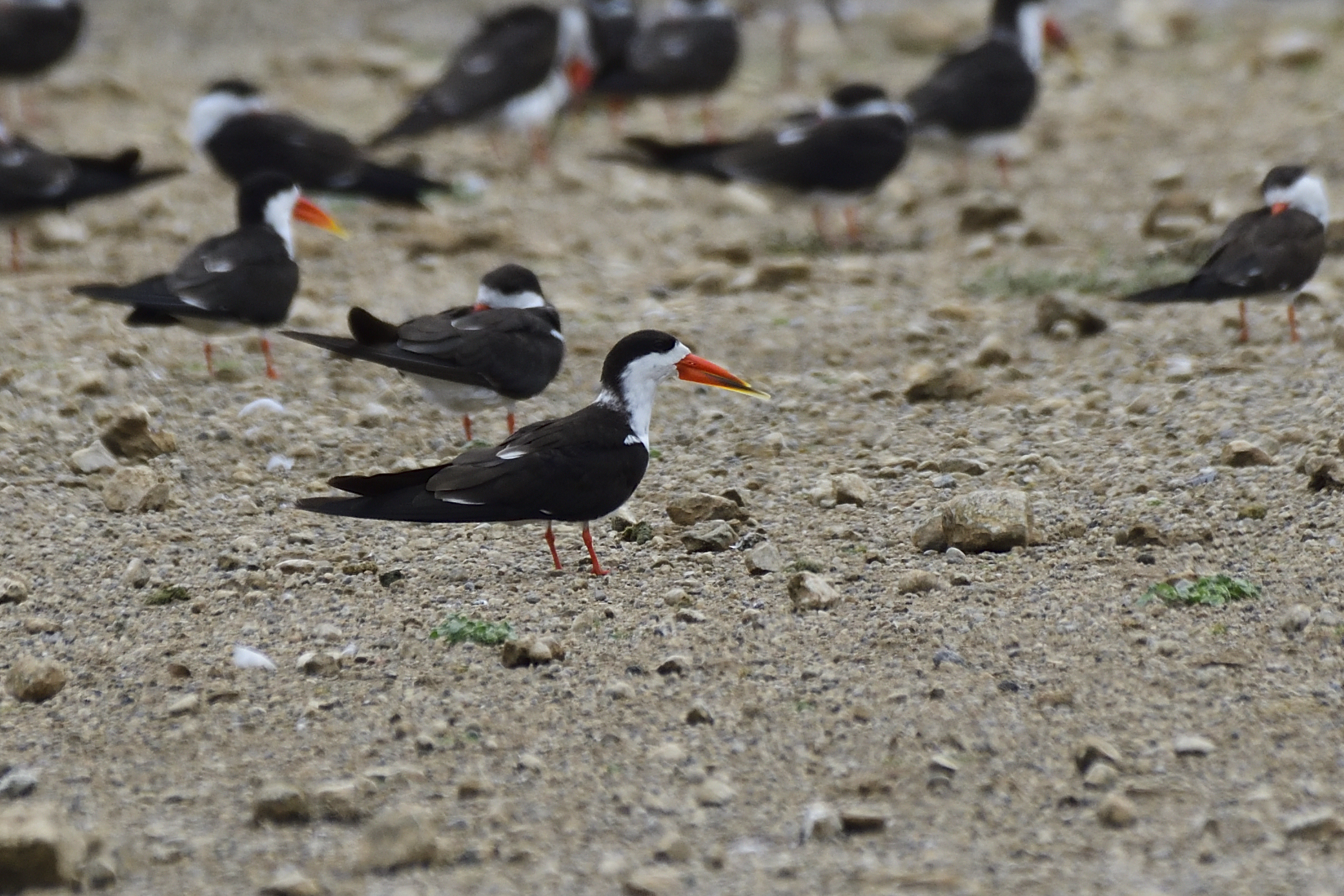
African Skimmer, Rynchops flavirostris

Just arrived at Nyumba ya Mungu Dam. Picture by Arkadiusz

Hildebrandt´s Starling, Lamprotornis hildebrandti – Endemic to E Africa
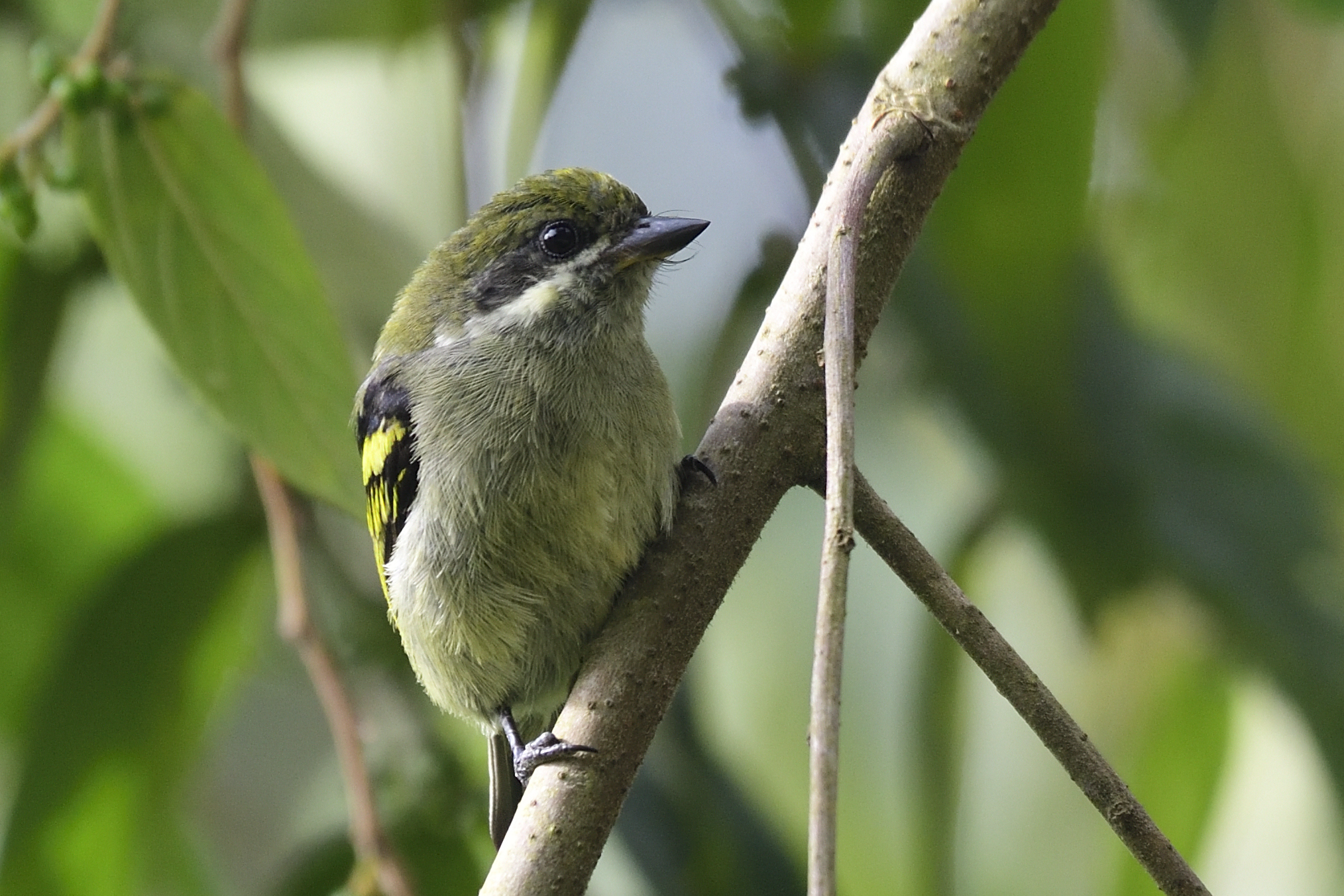
Moustached Tinkerbird, Pogoniulus leucomystax

Black-headed Apalis, Apalis melanocephala
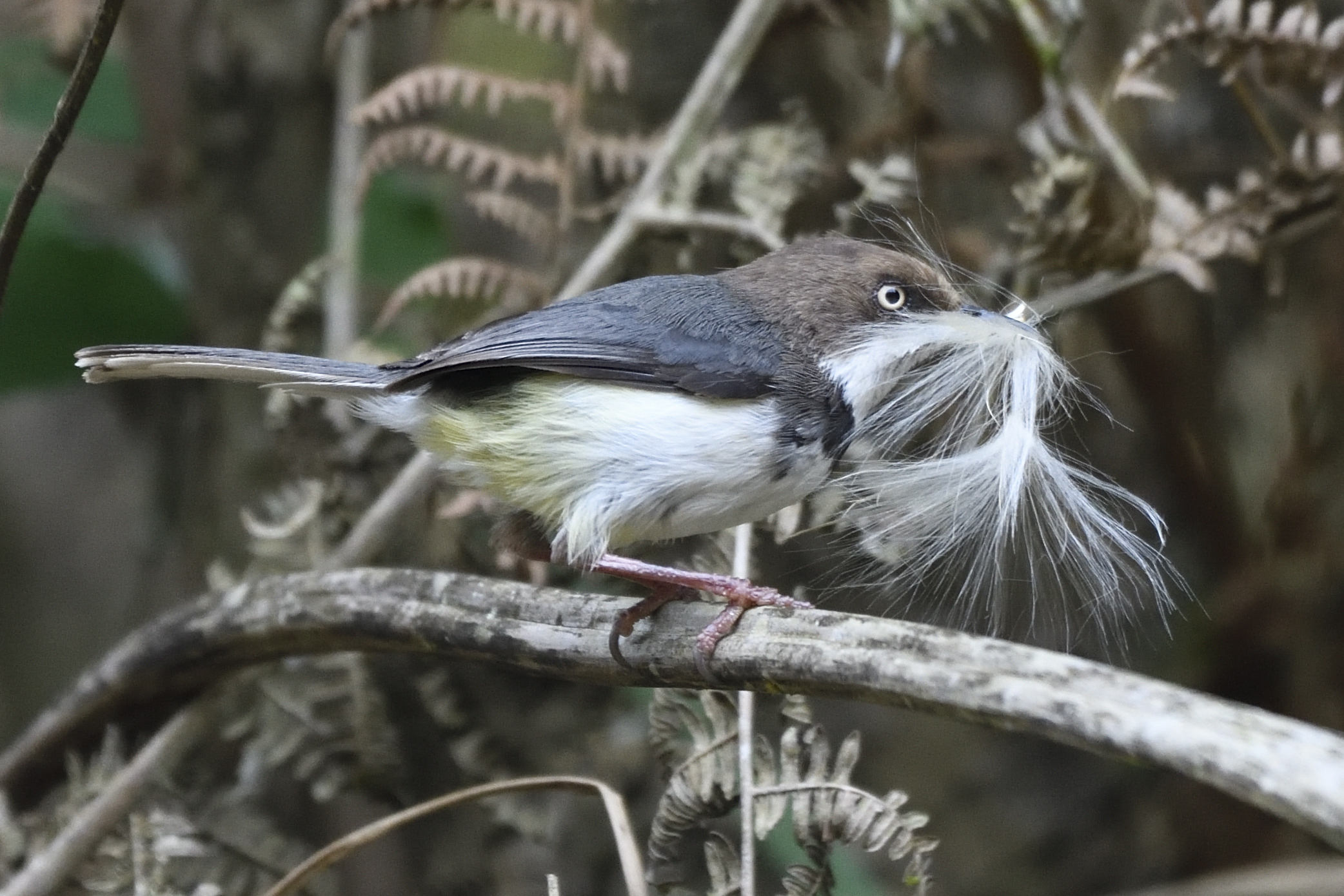
Bar-throated Apalis, Apalis thoracica – race pareensis

Usambara Double-collared Sunbird, Cinnyris usambaricus – Endemic to S Pare and Usambara Mountains of Tanzania
Day 6, Thursday, January 20 – Same – towards Mkomazi NP – Magamba Forest West Usambara.
Our first stop in the morning is an area just before Mkomazi National Park. It is only 15 minutes from the Motel, so we only departed at 6:45. I parked at my regular spot near a middle sized Beobab tree. Our two main targets here are always Eastern Black-headed Batis and Black-bellied Sunbird. We started walking and registered amongst others White-rumped Swift, Black-bellied Sunbird, Lanner Falcon, Hunter´s and Tsavo Sunbirds, White-bellied Go-away-bird, Lesser Masked and Black-necked Weavers, Eastern Black-headed Batis, Grey Wren-Warbler, Purple Roller, Red-belled Parrot, Red-fronted Tinkerbird, Black-headed Oriole, Tiny Cisticola, Northern Red-billed Hornbill, Lesser Honeyguide, Augur Buzzard and D´Arnaud´s Barbet. With both targets in box and a little time to spare I decided to drive to the gate of the National Park. On the way there we found Red-backed Shrike, Jacobin Cuckoo, Common Rock Thrush, Straw-tailed Whydah, White-winged Widowbird, Red-billed Quelea and a photo lifer for me: Grasshopper Buzzard. We went to the gate and on the way out Raymond spotted a Cheetah outside the park gate. We were back at the Motel for breakfast before 10:00. Selvine and her friend had already left for Magamba Forest. We ordered breakfast, packed our bags, had breakfast and was soon on our way. It is roughly 120 km on good roads to Mombo were we are starting driving up the old German road built before World War 1. The ladies had done the necessary shopping for us. We normally have a stop before Lushoto just by a police post. We stopped and got Mocking Cliff Chat, Grey Olive Greenbul, Baglafecht and Spectacled Weaver and East Coast Boubou. We continued past Lushoto and up to Magamba Forest. I was very proud to see that Selvine had already arrived in her Nissan X-Trail. We hurried to set up camp and was out birding at 4PM. The light is better up from camp in the afternoon. These are some of the birds we recorded on our first walk: Sharpe´s Starling, Cape Robin-Chat, Green Barbet, Usambara Thrush, African Dusky Flycatcher, Hartlaub´s Turaco, Red-capped Forest Warbler, White-tailed Crested Flycatcher, Evergreen Forest Warbler, African Stonechat, African Olive Pigeon, Southern Yellow White-eye, Waller´s Starling, Black-headed Mountain Greenbul (nigrecips), Eastern Bronze-naped Pigeon, Spot-throat, Usambara Akalat, Silvery-cheeked Hornbill, Grey Wagtail, Olive Sunbird, White-starred Robin, Yellow-bellied Waxbill, Barred Long-tailed Cuckoo and Mottled Swift. Gertruda, the ranger Manager of Magamba Forest have built ablution facilities with hot showers and even light in camp, so it is luxury camping compared to when Martin Joho and I was there the first time in 2014. The ladies was busy cooking and had the bonfire going when we returned to camp. We had a nice meal and everyone retreated to their tents.
Some pictures from Day 6:
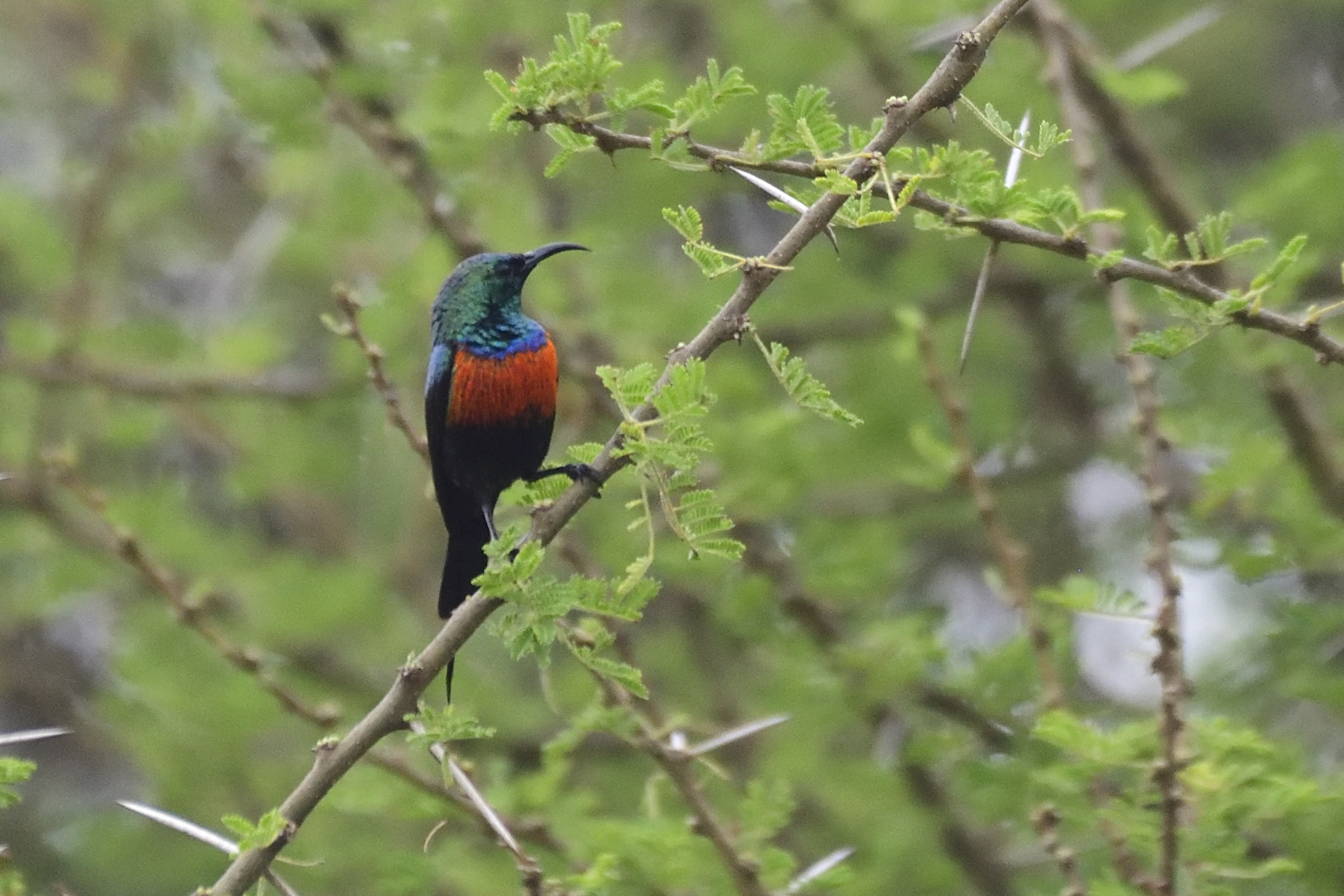
Black-bellied Sunbird, Cinnyris nectarinoides – Endemic to NE Africa

Purple Roller, Coracias naevius

Lanner Falcon, Falco biarmicus

Tiny Cisticola, Cisticola nana

Lesser Striped Swallow, Cercropis abyssinica

Straw-tailed Whydah, Vidua fischeri – Endemic to NE Africa

Grasshopper Buzzard, Butastur rufipennis

Cheetah, Acinonyx jubatus

Common Rock Thrush, Monticola saxatilis

Mocking Cliff Chat, Thamnolaea cinnamomeiventris

My friends were very impressed that Selvine had managed to drive the Nissan all the way to Camp in Magamba
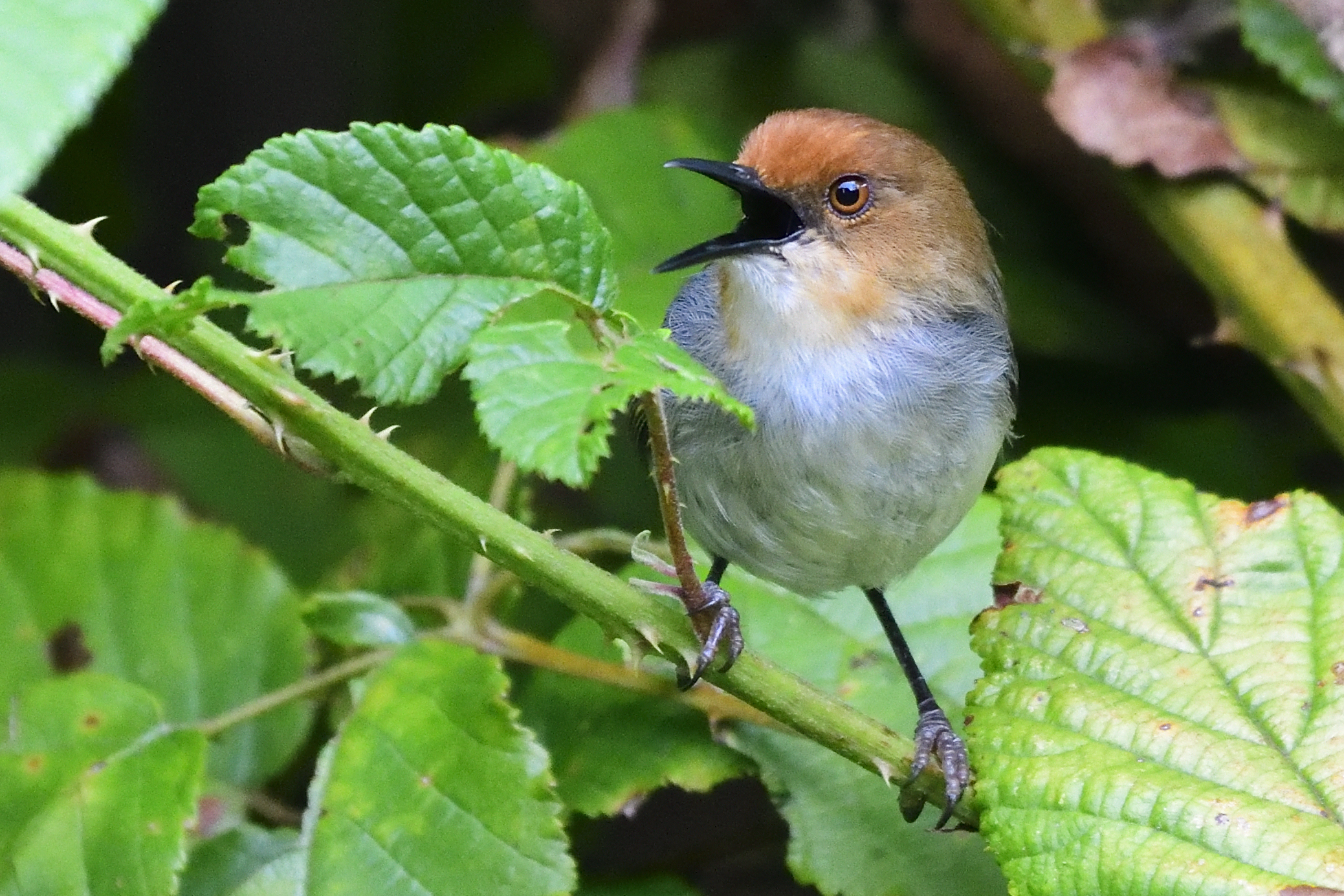
Red-capped Forest Warbler, Artisornis metopias – Endemic to Eastern Arc Mountains of Tanzania and N Mozambique
Day 7, Friday, January 21 – Magamba Forest, West Usambara
We had registered most of the target species the day before, now it was just a matter for my friends to try to get some or better pictures + a few new key species. New birds for Magamba Forest or the list that day: Green-backed Honeybirds, Fülleborn´s Boubou, Red-faced Crimsonwing, Red-backed Mannikin and Orange Ground Thrush. We birded both up from camp and down from camp more or less all day with a little brake mid day. After dinner everyone retreated to their tents except Arkadiusz and I. We had a beer or two around the fire. I heard a Western Barn Owl calling its ghost like call. I called it and it landed just above our head allowing for a few pictures. Arkadiusz and I soon turned in as well.

Sharpe´s Starling, Poeoptera sharpii – Endemic to NE Africa

Western Barn-Owl, Tyto alba
Day 8, Saturday, January 22 – Magamba Forest, West Usambara – Amani Forest, East Usambara
We were up and had a Coffee, Then we started walking again. We added Grey Cuckooshrike and Cinnamon Bracken Warbler before I left Abdul and my friends so I could go and pack up camp. When they returned for breakfast the camp were packed. I was very happy that they had added Usambara Weaver another Magamba Special in addition to Forest Batis. After breakfast, we loaded up the car and started on our way down the mountain. It is about 60 km to reach the main road. Once there it is a smooth drive to Muheza where we turn off to climb up the East Usambara mountains to Amani Forest. Just a few km outside of Muheza we normally stop for the Coastal Cisticola and Eastern Golden Weaver. We did and my friends got a couple of new birds. We then continued to our next stop which is the lower forest of Amani. There are quite a few species here that we do not find higher up. These are some of the species registered: Eastern Nicator, Common Square-tailed Drongo, Green-headed Oriole, Grey Tit-Flycatcher, Green-backed Camaroptera and Chestnut-fronted Helmetshrike. We then continued up to the headquarters of Amani where they have rustic but comfortable accommodation. We checked in and were soon out birding again: Pale Batis, Purple-Banded Sunbird, Long-crested Eagle, Southern Citril, White-eared Barbet, Green Barbet, Black Sparrowhawk, Banded Green Sunbird, Kenrick´s Starling, Mosque Swallow and Uluguru Violet-backed Sunbird were some of the species registered close to the headquarters in the remaining one hour of light. We then drove back to the HQ, freshened up and had dinner. After dinner we quickly retired to bed.
A picture from Day 8:

Banded Green Sunbird, Anthreptes rubritorques – Endemic to Eastern Arc Mountains of Tanzania
Day 9, Sunday, January 23 – Amani Forest, East Usambara.
We had a full day in Amani Forest. We loaded the car early to go up to a special spot. On the way we registered Black-bellied Starling, Cabanis´s Bunting, Brown-hooded Kingfisher, Northern Fiscal and Little Greenbul. We came to a point where the road was blocked by a fallen tree. I let Abdul take my friends and walk the last couple of hundred metres while I took the Landy around using another access road. When I arrived, Abdul had already found one of the targets. Long-billed Forest Warbler for my friends. The other target Kretchemer´s Longbill were harder to find. Most of the vegetation where these two birds strive has unfortunately been cut down, but the birds still hang out in the area, they are just a little harder to locate. Other birds registered at the first site included East Coast Boubou, Tambourine Dove, Pale-breasted Illadopsis, Eastern Bronze-naped Pigeon, Green-headed Oriole and Red-rumped Swallow. We had our packed breakfast on that site before we continued to the next site. I anticipated that the road up to the next site would be quite wet, but it was actually fine. We stopped at a little bridge and everyone got nice views of a Mountain Wagtail. We continued further up for our next target, Sharpe´s Akalat. We drove quite far up this bad forest road before we turn and go slowly downhill again. Abdul soon located the Akalat, but it provided for bad views. We knew there were more pairs in the area and we continued down. The play is like this. I walk with my friends until I cannot see the car, then I go back pick up the car and catch up with them. We do this all the way down to the bridge if necessary. Eventually Abdul found a bird that provided good view for everyone. We also heard the white-chested Alethe calling, but no view. We loaded the car and started our way back to camp. We tried to look for the Half-collared Kingfisher on the way. It was a struggle but Abdul eventually managed to locate one. Other birds on the way to back to camp and lunch included Black-throated Wattle-eye, Malachite Kingfisher, Fischer´s Greenbul, Southern Banded Snake Eagle and Red-tailed Ant Thrush. We reached camp and had lunch. At 3:30 PM we met for some new birding. We do quite a big loop around the botanical garden close to the headquarters. It is downhill all the way so I normally use the same leapfrog method. I drop them one place, walk with them and then go back to the car and bring it downhill, walk up to meet them, then walk with them before I pick up the car again. We eventually ended up quite far downhill from camp and most people are quite happy after a long walk albeit downhill, to be driven back to camp. Some new birds we registered for Amani or the trip included White-browed Coucal, Green-backed (Little-spotted) Woodpecker, Black-and-white Shrike-flycatcher, Silvery-cheeked Hornbill and African Green Pigeon.
Day 10, Monday January 24 – Amani Forest, East Usambara.
The last day in Amani Forest is always a catch up day to see what species we have missed. These are some of the species we found that day: Fischer´s Turaco, Crowned Eagle, African Emerald Cuckoo, Yellow-streaked Greenbul, African Goshawk, Placid Greenbul, Blue-spotted Wood Dove, African Emerald Cuckoo, Uluguru Violet-backed Sunbird and Klaas´s Cuckoo.
One picture from Day 10:

Fischer´s Turaco, Tauraco fischeri – Endemic to coastal East Africa
Day 11, Tuesday, January 25 – Amani Forest East Usambara – My house at Kiligolf.
We packed the car early and were off around 07:00 to bird the lower stretches of Amani Forest. We reached the birding spot around 08:00. Some of the birds we registered that morning included Little Yellow Flycatcher, Eastern Nicator, Plain-backed Sunbird, Red-tailed Ant Thrush, Lowland Tiny Greenbul, Dark-backed Weaver, Pale-breasted Illadopsis, Red-headed Bluebill (race cana), Dark-backed Weaver, Black-headed Apalis, Mombasa Woodpecker, Red-throated Twinspot and Green Malkoha. We had now reached the place where the forest stop, so we loaded up the car and started our long journey home. It is about a 7 hour drive from where we stopped birding. The drive went smooth and we were home in good time before the dark.

Red-headed (Usambara) Bluebill, Spermophaga ruficapilla cana – This race is restricted to the Usambara mts, Tanzania.
Picture by Raymond
Day 12, Wednesday, January 26 – Kiligolf- Meru Forest – Kalinga Forest – Kiligolf.
That day were the day with the toughest hike. I drove up to the entrance of Meru Forest. It is a tough walk and the ultimate target bird up there is the Abbot´s Starling. Unfortunately we dipped on that, but here are some of the birds we registered: Wahlberg´s Eagle, Scarce Swift, Tacazze Sunbird, Hunter´s Cisticola, Cinnamon Bracken Warbler, White-eyed Slaty Flycatcher, Abyssinian Thrush, Brown Woodland Warbler, Mountain Yellow Warbler, Broad-ringed White-eye, Placid Greenbul and Black-headed Mountain Greenbul. We drove a little down the mountain were there is a breeding colony of Speke´s Weavers. After the Speke´s we went to a restaurant in Usa River for lunch. After lunch, we drove up to Kalinga forest. We have some times managed to see and photograph a Buff-spotted Flufftail in that forest, but alas not a sound that day. Two other good birds we got were Narina Trogon and Green Malkoha. We had yet another stop on the way home. Abdul have found a breeding colony of Taveta Weavers. Sure enough The Weavers were busy building nests. We also found Thick-billed Weavers, Greater Honeyguide and Little Rush Warbler there. When we got home I had a Golden-backed Weaver in my garden. The ladies prepared a nice meal for us and we all turned in early.
Day 13, Thursday, January 27 – Kiligolf – Arusha National Park – Kiligolf.
It is only about 30 minutes from my house to the gate of Arusha National Park. We were at the gate around 07.30. I went and organised the entrance fee and Abdul took my friends birding around the gate. They got Tropical Boubou, Bronzy Sunbird, Brown-crowned Tchagra, Moustached Grass Warbler and Crimson-rumped Waxbill. When I were finished with the registration, my friends got in the car and we started driving. We used our normal route that takes us past the museum and up the right at the fork at Ngurdutu crater. On the way to the breakfast spot, we picked up Hildebrandt´s Spurfowl, Singing and Trilling Cisticola, Amethyst Sunbird, Brown-hooded Kingfisher, Chinspot Batis, Black Cuckooshrike and Long-billed Pipit. We had breakfast, turned and drove up the other side of the crater. Here we added Lemon Dove, African Emerald Cuckoo, Grey-headed Nigrita, African Dusky Flycatcher, Hartlaub´s Turaco, Scaly Francolin, White-eared Barbet, Rüppel´s Robin-Chat, Black-headed Apalis and Black-backed Puffback. We then drove down from the crater and stopped at a small wetland and added White-backed Duck, Black Crake, Common Moorhen and Allen´s Gallinule. We continued to the Momella lakes and registered Little Grebe, Reed Cormorant, Southern Pochard, Pangani Longclaw, Lesser and Greater Flamingo, Cape Teal, Black-winged Stilt, Ruff, Western Marsh Harrier, Black-headed Oriole and Little Egret. On the way to Mount Meru, we added Red-collared Widowbird and Sombre Greenbul. We stopped at the Fig Tree, but not much activity. Further up, we added Scaly-throated Honeyguide, Green Sandpiper, Bar-tailed Trogon, Abyssinian Crimsonwing and on the top Eastern Double-collared Sunbird. On the way down, we stopped at the waterfall and on the road just beneath the waterfall, we had Red-fronted Parrots in a tree. Abdul has seen them there in the same tree later, so there is a big probability that they are actually nesting in that tree.The last bird recorded was a surprise: Black Stork. We were at the gate 5 minutes before the gate closed. When we reached Kiligolf, we found a Verreaux´s Eagle- Owl close to my house. The ladies again prepared a nice meal for us. We retired early after dinner.
Some pictures from day 13:

Arkadiusz, me, Raymond and Øystein at the Fig tree arch
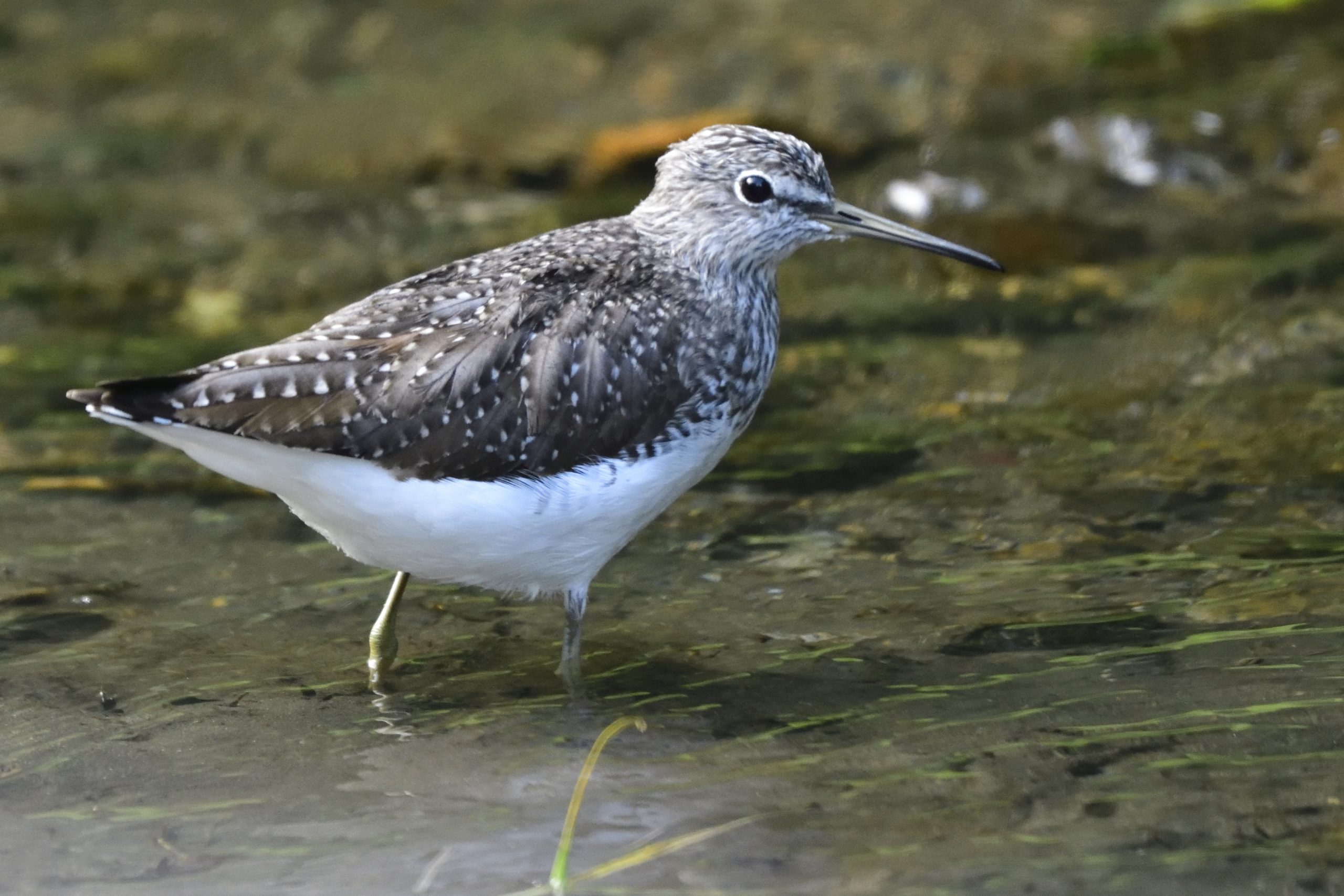
Green Sandpiper, Tringa ochropus
Driving up Mount Meru. Video by Arkadiusz

Just arrived as high as you can drive on Mount Meru (ca 2500m) Picture by Arkadiusz
Day 14, Friday, January 28 – Kiligolf – Lake Duluti – Kiligolf
This were an open day. We still had the upper 9 holes to walk on Kiligolf, but that would not take all day, so we decided to go to nearby Lake Duluti to see if we could find some more birds. These are some of the birds recorded at Lake Duluti: Violet-backed Starling, White-breasted Cormorant, Pied Kingfisher, Trumpeter Hornbill, Purple Heron, Yellow-billed Kite, African Pygmy Kingfisher, African Darter, Black-throated Wattle-eye, Crowned Hornbill, African Wood Owl, Southern Black Flycatcher, White-crested Helmetshrike and Red-headed Weaver. We drove home for lunch and took a walk on the Golf Course after lunch. Here are some of the birds: Spot-flanked Bsrbet, Northern Brownbul, Rattling Cisticola, Buff-bellied Warbler, Sombre Greenbul, Brubru, Chinspot Batis, Diederik Cuckoo, Grey headed Silverbill and Greater Painted Snipe.
Day 15, Saturday, January 29 – Kiligolf – Kilimajaro International Airport – Kiligolf.
This was the day of departure for my friends back to cold Northern Norway. I suggested a little morning walk for my friends in the morning, but it had been 2 weeks of hard core birding so my friends decided to just enjoy breakfast and take some pictures in my garden. At noon I drove them to the airport and wished them a safe flight home.
On the standard Usambara Trip, I normally promise between 380 – 420 species. On this trip we managed to record a staggering 464 species. This is a record that is going to be hard to beat. Some individual number for my friends: Raymond: 216 lifers, 200 picture lifers, photographed 357 species (Photographed 76% of the species recorded). Øystein got 173 lifers and 154 picture lifers. Arkadiusz who had never been to Africa before managed to get picture of 410 species! that are pictures of 88% of the species recorded on the trip! After the January Usambara trip, I did a Kenya trip in February, stay tuned for the next trip report. I have now seen 849 species in Tanzania and photographed 798. For East Africa: Seen 1082, Photographed 1012.